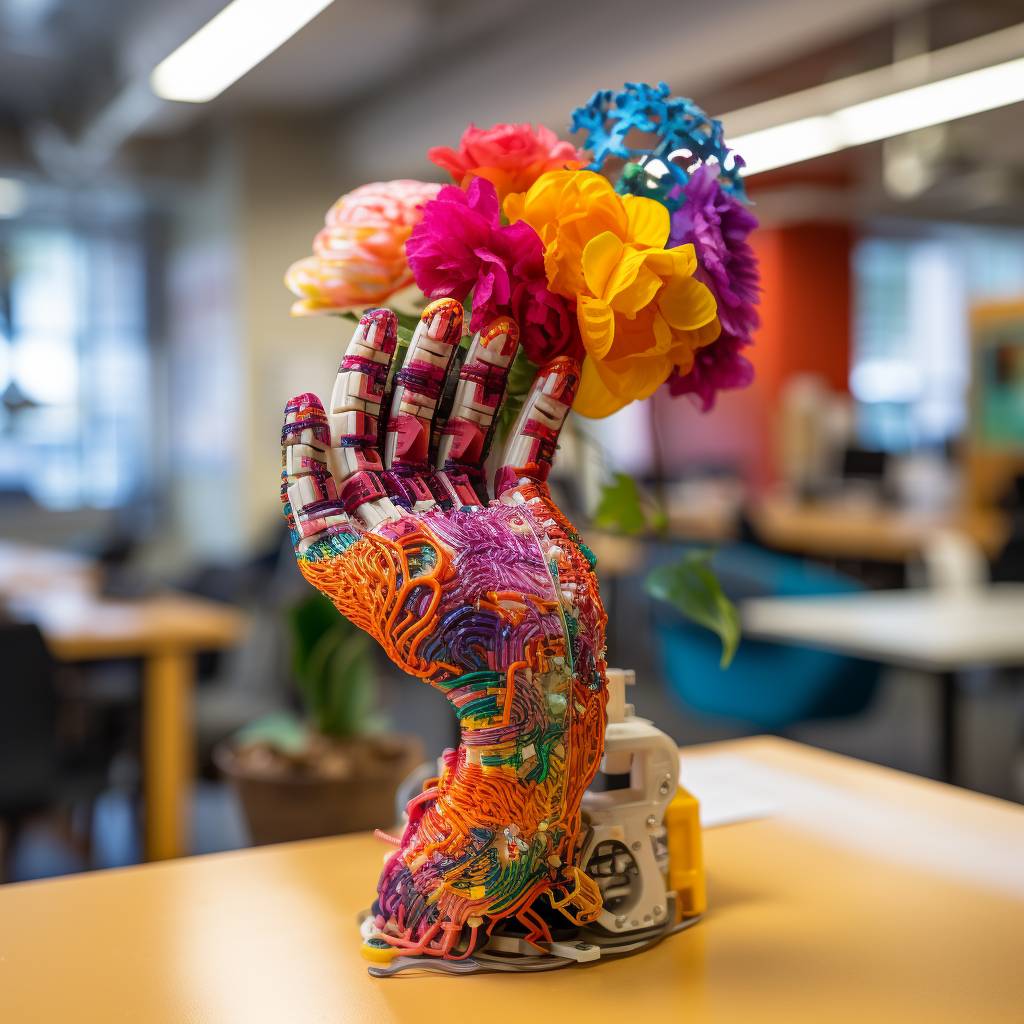In a groundbreaking development, a team of roboticists at the University of California San Diego, in partnership with researchers at BASF Corporation, have created a 3D printed soft robotic gripper that functions without the use of any electronics. The details of this innovative project were recently published in an issue of Science Robotics.
The aim of this project was to construct a soft gripper that could be utilized immediately after being 3D printed. The team wanted to equip the gripper with built-in gravity and touch sensors, enabling it to pick up, hold, and release objects. This is a first-of-its-kind development in the field of soft robotics.
Yichen Zhai, a postdoctoral researcher in the Bioinspired Robotics and Design Lab at the University of California San Diego and the lead author of the paper, explained the functionality of the gripper. “We engineered a series of valves that enable the gripper to grip upon contact and release at the appropriate moment,” he said. “The gripper can both grip and release simply by being turned horizontally. This action triggers a change in the airflow within the valves, causing the two fingers of the gripper to release the object.”
This fluidic logic system allows the robot to detect when it has successfully grasped an object and is maintaining its hold. When it senses the weight of the object shifting to one side as it rotates horizontally, it releases the object.
The field of soft robotics has the potential to revolutionize how robots interact safely with humans and delicate objects. This gripper could be used in a variety of applications, from being mounted on a robotic arm for industrial manufacturing processes, handling food products, and even delicate tasks like handling fruits and vegetables. It could also be incorporated onto a robot for research and exploration tasks. Remarkably, it can operate untethered, powered by a single bottle of high-pressure gas.
Traditionally, 3D-printed soft robots have had certain limitations; they often have a degree of stiffness; they tend to have leaks when they come off the printer; and they require substantial processing and assembly post-printing to make them operational. The team overcame these challenges by developing an innovative 3D printing method.
This method involves the printer nozzle tracing a continuous path through the entire pattern of each layer printed. “It’s akin to sketching an image without ever lifting the pencil off the page,” explained Michael T. Tolley, an associate professor in the UC San Diego Jacobs School of Engineering and the senior author on the paper.
This technique significantly reduces the likelihood of leaks and defects in the printed piece, which are common issues when printing with soft materials. It also allows for printing thin walls, down to 0.5 millimeters in thickness. The thinner walls and complex, curved shapes allow for a higher range of deformation, resulting in a softer structure overall.
The researchers based their method on the Eulerian path concept from graph theory, which is a trail in a graph that touches every edge once and only once. “When we adhered to these principles, we were able to consistently print functional pneumatic soft robots with embedded control circuits,” Tolley said.
This development marks a significant advancement in robotics, illustrating how electronics can be bypassed in favor of more direct methods like 3D printing. It also showcases how concepts from fields such as graph theory and coding can be applied practically in creating innovative solutions in robotics.
